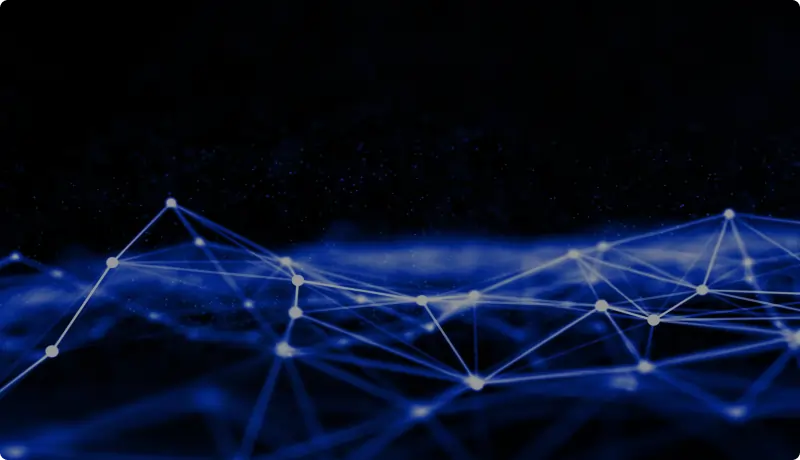
Since cyber risk can’t be eliminated, the question that must be answered is: Can cyber risk at least be managed in a cost-effective manner? The answer is an emphatic yes! ... Identify the sources of cyber risk. These sources can be broken down into various categories. More specifically, there are internal and external threats, as well as potential vulnerabilities that are the basis for cyber risk. Identifying these threats and vulnerabilities is not only a logical place to start the process of managing an organization’s cyber risk, it also will help to frame an approach for addressing an organization’s cyber risk. Estimate the likelihood (i.e., probability) that your organization will experience a cyber breach. Of course, any single point estimate of the probability of a cyber breach is just that—an estimate of one possibility from a probability distribution. Thus, rather than estimating a single probability, a range of probabilities could be considered. Estimate the maximum cost to an organization if a cyber breach occurs. Here again, a point estimate of the maximum cost resulting from a cyber-attack is just that—an estimate of one possible cost. Thus, rather than estimating a single cost, a range of costs could be considered.
How AI is Revolutionizing Prosthetics to Refine Movement

AI prosthetics technology is advancing on several fronts. Researchers at the UK's University of Southampton and Switzerland's EPFL University have, for instance, developed a sensor that allows prosthetic limbs to sense wetness and temperature changes. "This capability helps users adjust their grip on slippery objects, such as wet glasses, enhancing manual dexterity and making the prosthetic feel more like a natural part of their body," Torrang says. Multi-texture surface recognition is another area of important research. Advanced AI algorithms, such as neural networks, can be used to process data from liquid metal sensors embedded in prosthetic hands. "These sensors can distinguish between different textures, enabling users to feel various surfaces," Torrang says. "For example, researchers have developed a system that can accurately detect and differentiate between ten different textures, helping users perform tasks that require precise touch." Natural sensory feedback research is also attracting attention. AI can be used to provide natural sensory feedback through biomimetic stimulation, which mimics the natural signals of the nervous system.
From Chaos to Clarity: CTO’s Guide to Successful Software {Code} Refactoring

As software grows, code can become overly complicated and difficult to
understand, making modifications and extensions challenging. Refactoring
simplifies and clarifies the code, enhancing its readability and
maintainability.Signs of poor performance If software performance degrades or
fails to meet efficiency benchmarks, refactoring can optimize it and improve its
speed and responsiveness. Migration to newer technologies and libraries When
migrating legacy systems to newer technologies and libraries, code refactoring
ensures smooth integration and compatibility, preventing potential issues down
the line.Frequent bugs Frequent bugs and system crashes often indicate a messy
codebase that requires cleanup. If your team spends more time tracking down bugs
than developing new features, code refactoring can improve stability and
reliability.Onboarding team of new developers Onboarding new developers is
another instance where refactoring is beneficial. Standardizing the code base
ensures new team members can understand and work with it more effectively.Code
issues
How to Win the War Against Bad Master Data
The most immediate chance to make a difference lies within your existing
dataset. Take the initiative to compare your supplier and customer master data
with reliable external sources, such as government databases, regulatory lists,
and other trusted entities, to pinpoint discrepancies and omissions. Consider
this approach as a form of “data governance as a service,” as a shortcut to data
quality where you can rely on comparison with the authoritative data sources to
make sure fields are the right length, in the right format, and, even more
important, accurate. This task may require significant effort (unless automated
master data validation and enrichment is employed), but it can provide an
immediate ROI. Each corrected error and updated entry contributes to greater
compliance, lower risk and enhanced operational efficiency within the
organization. However, many companies lack a consistent process for cleaning
data, and even among those with a process in place, the scope and frequency of
data cleansing is often insufficient. The best data quality comes from
continuous automated cleansing and enrichment.
3 Ways to Boost Cybersecurity Defenses With Limited Resources

Assume-breach accepts that breaches are inevitable, shifting the focus from
preventing all breaches to minimizing the impact of a breach through security
measures, protocols and tools that are designed with the assumption that an
attacker may have already compromised parts of the network. Paired with the
assume-breach mindset, these security measures, protocols and tools focus on
protecting data, detecting unusual behavior and responding quickly to
potential threats. Just as cars are equipped with seatbelts and airbags to
reduce the fallout of a crash, assume-breach encourages organizations to put
proactive measures in place to reduce the impact and damage when the worst
occurs. ... In the event a cyber attack does occur, having a well-tested and
resilient plan in place is key to minimize impacts. As the entire organization
participates in these practices and trainings, leaders can focus on
implementing assume-breach security measures, protocols and tools. These
measures should include enhancing real-time visibility, identifying
vulnerabilities, blocking known ransomware points and strategic asset
segmentation.
The Future of LLMs Is in Your Pocket

The first reason is that, due to the cost of GPUs, generative AI has broken
the near-zero marginal cost model that SaaS has enjoyed. Today, anything
bundling generative AI commands a high seat price simply to make the product
economically viable. This detachment from underlying value is consequential
for many products that can’t price optimally to maximize revenue. In
practice, some products are constrained by a pricing floor (e.g., it is
impossible to discount 50% to 10x the volume), and some features can’t be
launched because the upsell doesn’t pay for the inference cost ... The
second reason is that the user experience with remote models could be
better: generative AI enables useful new features, but they often come at
the expense of a worse experience. Applications that didn’t depend on an
internet connection (e.g., photo editors) now require it. Remote inference
introduces additional friction, such as latency. Local models remove the
dependency on an internet connection. The third reason has to do with how
models handle user data. This plays out in two dimensions. First, serious
concerns have been about sharing growing amounts of private information with
AI systems.
GenOps: learning from the world of microservices and traditional DevOps

How do the operational requirements of a generative AI application differ
from other applications? With traditional applications, the unit of
operationalisation is the microservice. A discrete, functional unit of code,
packaged up into a container and deployed into a container-native runtime
such as kubernetes. For generative AI applications, the comparative unit is
the generative AI agent: also a discrete, functional unit of code defined to
handle a specific task, but with some additional constituent components that
make it more than ‘just’ a microservice ... The Reasoning Loop is
essentially the full scope of a microservice, and the model and Tool
definitions are its additional powers that make it into something more.
Importantly, although the Reasoning Loop logic is just code and therefore
deterministic in nature, it is driven by the responses from
non-deterministic AI models, and this non-deterministic nature is what
provides the need for the Tool, as the agent ‘chooses for itself’ which
external service should be used to fulfill a task. A fully deterministic
microservice has no need for this ‘cookbook’ of Tools for it to select from:
Its calls to external services are pre-determined and hard coded into the
Reasoning Loop.
Saudi Arabia strengthening cyber resilience through skills development

Currently, four of the top 10 fastest-growing job roles in Saudi Arabia fall
within the fields of cybersecurity, data analysis, and software development.
As the demand for such expertise far outstrips supply, the government,
industry, and academia must collaborate to develop and expand pathways to
nurture talent in this field. Enhanced curricula and specialized programs
will help upskill students in data protection, while partnerships with
global tech companies can facilitate knowledge transfer and provide access
to cutting-edge technologies and methodologies in public and private sector
organizations. The Saudi government’s investments in initiatives to enhance
digital skills, including a $1.2 billion plan to train 100,000 youths by
2030 in critical fields like digital security, are a crucial step in this
direction. Saudi Arabia today outpaces the global average in cybersecurity
trends, with 3.1 percent compared to the global average of 2.5 percent. An
overwhelming 79 percent of Saudi employees anticipate substantial shifts in
their work dynamics due to AI advancements. This is reflected in the rise of
new learners in the Kingdom who are building skill proficiencies and
acquiring new digital skills to boost their economic mobility.
How Financial Firms Can Build Better Data Strategies

For financial organizations, data strategies are often driven by CISOs and
tend to focus on data protection and security. This enables regulatory and
operational compliance by ensuring the right people can access the right
data at the right time while still aligning to the corporate security and
risk stance. But this now comes within the context of the emergence of
artificial intelligence and the growing sense that firms need to leverage it
to gain a competitive edge. For example, loan data can be made more valuable
with AI-driven analytics. Or banks can use AI tools to identify patterns
related to fraud or compliance challenges to help them avoid potential
regulatory pitfalls. ... New tools often seem like the answer to every data
challenge, but the right tools build on what’s already in place. To ensure
that new solutions deliver a strategic advantage, leaders must ask simple
questions: What’s the business need? Why am I pursuing this approach or
tool? This requires an honest assessment of current data conditions,
business needs and coworker skill sets. While many businesses are fully
compliant and meet regulations, their data may not be highly active or in
great shape. Identifying issues lets leaders define business needs.
Achieving digital transformation in fintech one step at a time

The fintech industry continues to experience unprecedented growth year after
year. According to the Statista survey, there are more than 3 billion
customers in this niche worldwide, and this number is expected to have grown
to 4.8 billion by 2028. Advanced financial technologies are gradually
replacing traditional services. For instance, one of the latest researches
by the American Bankers Association has shown that 71% of users prefer
managing their financial affairs online (48% of them — with the help of
mobile apps), while only 9% of clients would rather go to a physical bank
branch. In addition, more and more people around the world are favoring
cryptocurrencies over traditional currencies as payment and investment
tools. It is proven by the Forbes statistics, which state that the
capitalization of the crypto market has exceeded 2.5 trillion dollars. As is
well-known, demand creates supply. Such a keen interest in modern fintech
instruments and services from users from all over the world generates a
constant growth of supply in this sphere. Every year, plenty of new
companies emerge, while the existing ones introduce numerous innovations to
keep their regular customers and attract new ones.
Quote for the day:
"True greatness, true leadership, is
achieved not by reducing men to one's service but in giving oneself in
selfless service to them." -- J. Oswald Sanders
No comments:
Post a Comment